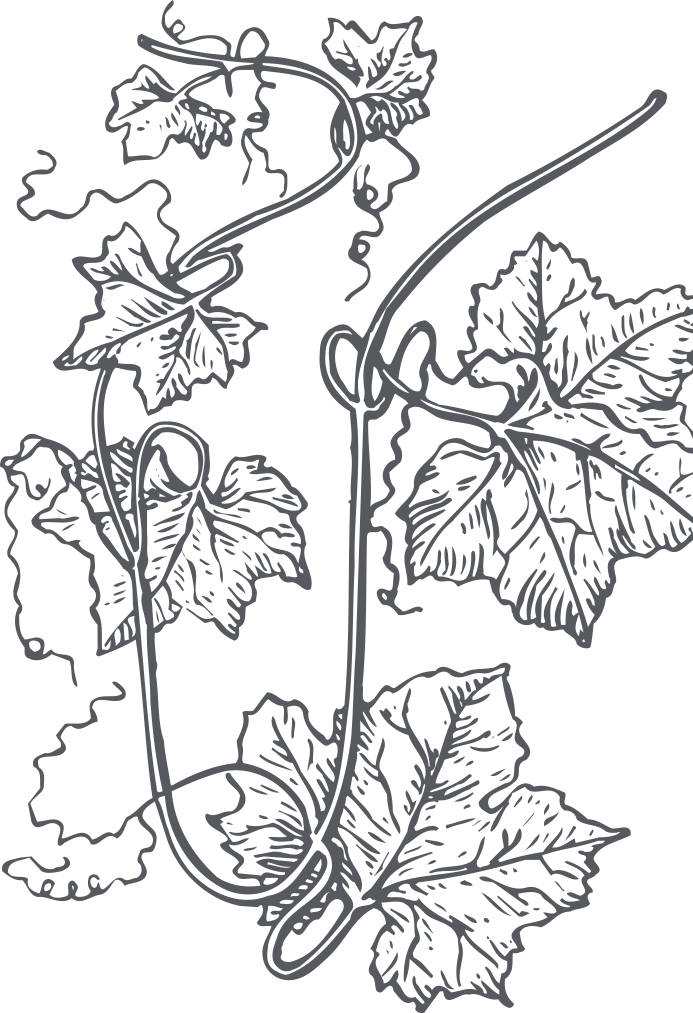

Enchanting passage of rolling hills, medieval villages and noble lands.

The survival of viticulture and the art of wine-making after the barbarian invasions that followed the fall of the Roman Empire, was mainly thanks to the monks who, in order to protect their monasteries, had continued to pass down the art of vine cultivation and the production of wine necessary for the celebration of the Eucharist. In the area today defined as “Collina Torinese” or the “Torino hills”, this responsibility remained with the Augustine monks of Vezzolano Abbey who spread cultivation throughout the surrounding area. When talking about wines from the province of Torino it is impossible to not refer to the 606 writings of Giovanni Battista Croce, “The excellence and diversity of wines from the Torino mountain (sic) region and their cultivation and production”. Being a an eclectic character with the Court of Savoy, moonlighting as a goldsmith, architect, agriculturist and wine-maker with a Milanese heritage, Croce greatly contributed to the growth of vineyards and wines of the area. Even if Croce doesn’t make specific references to “Freisa” in his writings, perhaps due to local dialect discrepancies, other numerous varietals such as “Cario” and “Malvagie” (“Cari” and “Malvasia”), along with
“Candia”, found space in his vineyards of Val San Martino and Val Salice. The interest shown by the Court in these wines stimulated the rapid development of rows around middle-class properties and country houses owned by Queen Madama Reale Cristina of France. Wine-making was not large scale at this time but it
was more family-based whilst greater appreciation of the art of cultivating grape vines with better equipped cellars for wine-making and storage still covered only family needs. These vines, probably cultivated principally in Freisa, were publicly registered as “vinee ultra padum”, or “wines beyond the Po (River)”. As time passed with the changes of ownership, winemaking became a commercial activity. This type of wine-making is still the norm for the Torino hills today. The hills, which serve as the true “trait d’union” between Torino and Monferrato and the passage way to the enchanting land of rolling hills, medieval villages and noble land, constitute the undisputed princely territory called Freisa which, following the DOC recognition, has loaned its name to a similar wine from the Chierese area since 973. This was delayed until 999 because such a move increased the value of the DOC “Collina Torinese” and of other classic varietals that have contributed to the history of this territory; Barbera and Bonarda are first in popularity but also the rare and delicate “Cari” and “Malvasia” are ideally paired with some of the best Torinese pastries.
Varietal: Barbera (min. 85%); other red grapes, not aromatic, recommended and/or authorised for the province of Torino (max. 5%).
Maximum yield per hectare: 90 quintals.
Maximum yield of wine from grapes: 70%.
Colour: intense ruby red.
Perfume: unique, vinous.
Flavour: dry, crisp, palatable, full-bodied.
Minimum total alcohol level: 0.5% vol.
Recommended serving temperature: 4- 6° C.
Varietal: Bonarda (min. 85%); other red grapes, not aromatic, recommended and/or authorised for the province of Torino (max. 5%).
Maximum yield per hectare: 90 quintals.
Maximum yield of wine from grapes: 70%.
Colour: not very intense ruby red.
Perfume: vinous, intense.
Flavour: dry, unique.
Minimum total alcohol level: 0.5% vol.
Recommended serving temperature: 4- 6° C
Varietal: Malvasia di Schierano (min. 85%); other red grapes, recommended and/or authorised for the province of Torino (max. 5%).
Maximum yield per hectare: 0 quintals.
Maximum yield of wine from grapes: 70%.
Colour: cherry red.
Perfume: crisp and fragrant, recalls the original grape.
Flavour: sweet, slightly aromatic.
Minimum total alcohol level: 0% vol. of which at least 5 apparent.
Recommended serving temperature: 8- 0° C.
Varietal: Cari (min. 85%); other red grapes, not aromatic, recommended and/or authorised for the province of Torino (max. 5%).
Maximum yield per hectare: 80 q.
Maximum yield of wine from grapes: 70%.
Colour: cherry red.
Perfume: fragrant, recalls the original grape.
Flavour: sweet, pleasant, unique.
Minimum total alcohol level: 10% vol. of which 5 apparent.
Recommended serving temperature: 8-10° C.
Varietal: Barbera (min. 60%), Freisa (min. 5%), other red grapes, not aromatic, recommended and/or authorised for the province of Torino (max. 5%).
Maximum yield per hectare: 100 quintals.
Maximum yield of wine from grapes: 70%.
Colour: ruby red.
Perfume: intense, unique, vinous.
Flavour: dry, palatable.
Minimum total alcohol level: 10.5% vol.
Recommended serving temperature: 4- 6° C.
Varietal: Barbera (min. 60%), Freisa (min. 5%), other red grapes, not aromatic, recommended and/or authorised for the province of Torino (max. 5%).
Maximum yield per hectare: 00 quintals.
Maximum yield of wine from grapes: 70%.
Colour: ruby red.
Perfume: intense, unique, vinous.
Flavour: dry, palatable.
Minimum total alcohol level: 11% vol.
Recommended serving temperature: 14- 16° C
Varietal: Freisa (min 90%) other red grapes, not aromatic, suitable for cultivation in Piemonte (max. 0%).
Maximum yield per hectare: 80 quintals.
Maximum yield of wine from grapes: 70%.
Colour: from ruby red to light cherry, occasional hints of violet.
Perfume: characteristically delicate with hints of raspberry, rose and violets.
Flavour: sweet, crisp, occasionally sparkling.
Minimum total alcohol level: 11% vol. of which at least 7% is apparent.
Recommended serving temperature: 8- 10° C.
Varietal: Freisa (min 90%) other red grapes, not aromatic, suitable for cultivation in Piemonte (max. 0%).
Maximum yield per hectare: 80 quintals.
Maximum yield of wine from grapes: 70%.
Colour: from ruby red to light cherry.
Foam: fine.
Perfume: characteristically delicate with hints of raspberry, rose and violets.
Flavour: palatable, elegant with a pleasant raspberry aftertaste.
Minimum total alcohol level: 11% vol.
Recommended serving temperature: 8- 10° C.
Varietal: Freisa (min 90%) other red grapes, not aromatic, suitable for cultivation in Piemonte (max. 0%).
Maximum yield per hectare: 80 quintals.
Maximum yield of wine from grapes: 70%.
Colour: ruby red tending to garnet.
Perfume: characteristically delicate with hints of raspberry, rose and violets.
Flavour: dry, occasionally sparkling and slightly acidic; the flavour becomes more harmonious and delicate with age.
Minimum total alcohol level: 11% vol.
Recommended serving temperature: 14- 16° C.
Varietal: Freisa (min 90%) other red grapes, not aromatic, suitable for cultivation in Piemonte (max. 0%).
Maximum yield per hectare: 80 quintals.
Maximum yield of wine from grapes: 70%.
Colour: from ruby red to light cherry.
F oam: fine, persistent.
Perfume: characteristically delicate with hints of raspberry, rose and violets.
Flavour: brut, dry or sweet, palatable, elegant with a pleasant raspberry aftertaste.
Minimum total alcohol level: from 6 to 8 % vol.
Recommended serving temperature: 8- 10° C.
Varietal: Freisa (min 90%) other red grapes, not aromatic, suitable for cultivation in Piemonte (max. 0%).
Maximum yield per hectare: 80 quintals.
Maximum yield of wine from grapes: 70%.
Colour: garnet red or cherry with hints of orange as it ages.
Perfume: characteristically delicate with hints of raspberry and violets.
Flavour: dry, delicately smooth with possible overtones of wood.
Minimum total alcohol level: 12% vol.
Recommended serving temperature: 16- 18° C. (60 - 65° F).
